How to Get a Complete Workout to your Body ! No Gym Required ! :O
- Four Rules to Follow :
- Always remember to breathe. This seems obvious, but when you’re in the middle of an exercise you may actually forget. In most cases you’ll exhale when you do the hard work (e.g. the pushing up part of a push up), and inhale on the easier part (e.g. when you lower your body for the push up). This isn’t always the case, however, and special breathing instructions are noted where relevant in this post.
- Form is extremely important. If you do an exercise wrong, what seems like progress initially will quickly dissipate and possibly result in injury. Be sure you’re doing the exercises correctly before you begin. Ask a friend to watch your form first. If you know a professional, ask them to help guide you. While this guide will explain proper form, it is your responsibility to ensure you doing the exercises properly and not cutting any corners.
- Take it slowly. While aerobic exercise if often the exception, most other exercise is best performed slowly. This doesn’t mean you should take long breaks in between each push up and sit up, but that you shouldn’t perform each as quickly as possible. Going slowly will work the muscle more and make you stronger.
- Your goal is to fail. The key to a good work out is failure. That doesn’t mean giving up because you’re frustrated and tired, but rather pushing the limits of your strength until your strength is spent. Obviously you don’t want to push yourself to the point of injury, but that shouldn’t be a concern so long as you’re exhibiting the proper form. Don’t worry too much about the number of repetitions of any given exercise, but instead concentrate on working as hard as you can. A larger number of push ups doesn’t necessarily mean you’re stronger. Some days you’ll have more energy than others and will perform better. Some days you’ll perform worse. The key is to do the best you can with all of the energy you have. If you fail, you succeed.
Cardio :
Aerobic/cardiovascular exercise, or cardio for short, targets your heart. In addition to improving your heart health, it also provides benefits to many other areas in your body as you’ll need to work multiple muscle groups in order to perform aerobic exercise. While the good news is that cardio can be great for your entire body, the bad news is that most people hate doing it because they hate running. It doesn’t have to be terrible, however, as there are a couple of variations that might make it easier and more fun for you. Here are two options that can make running easier and more fun, plus they only take about 20-30 minutes 2-3 times per week.
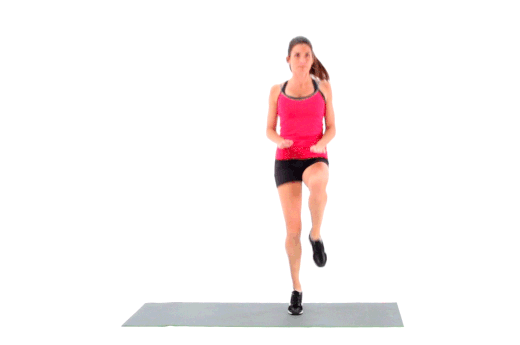
There are several methods of running in intervals, but here’s one example to give you an idea:
- A light jog for a few minutes to get moving (2-5 minutes).
- 1 minute of high-speed running, then 1 minute of low-speed jogging, repeated 5-10 times (depending on your stamina).
- A 5 minute light jog to cool down (or more if necessary).
Stair Climbing :
Stair climbing is a simple exercise you can perform anywhere there is a staircase, whether that staircase is in your home or in public. You’ve likely seen films depict athletes running up large staircases in stadiums before, and this is because it’s great exercise. It’s especially effective if you skip every other step. How can you do this as a practical exercise? If you have access to a standard staircase at home, just follow these steps:
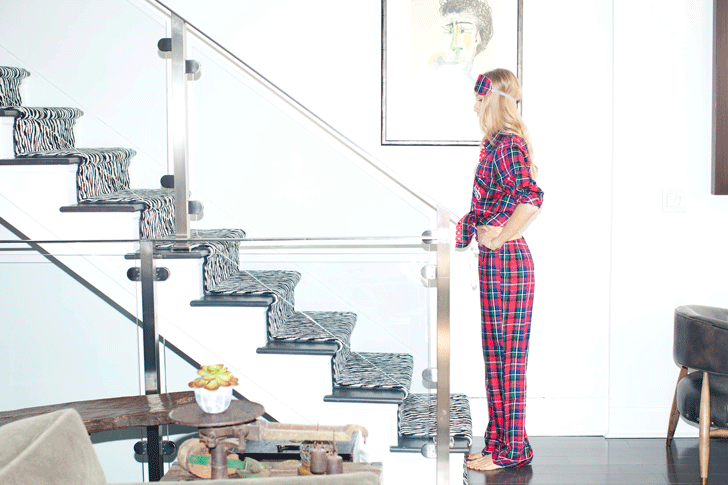
- Run up and down the staircase as many times as you can. Skip steps in-between if you can. Stop when you are so tired you cannot continue anymore. When you get to this point, you mostly likely will only be part of the way up the staircase. If you made it to the top, chances are you’ve got another climb left in you.
- Take the total number of times you made it to the the top of the stairs and cut it in half. For example, let’s say you maxed out at 20 times and that halved number is 10.
- The next time you climb stairs, run up and down 10 times each (the halved number).
- Take a 60-90 second break, then do another set of 10 (the halved number).
- Take another 60-90 second break, then do at least 10 (the halved number). If you can do more, do more. Your goal is to push yourself until you’re too tired to go on.
- As this gets easier, increase the number of times you climb the stairs per set so you’re always pushing yourself to work harder.
Upper Body
When we’re talking about upper body exercise, we’re primarily talking about working the muscles in your shoulders, arms, and chest. These exercises are some of the easiest to do and the most rewarding because you tend to see results quickly. That said, upper body exercises are some of the easiest to perform incorrectly and that can 1) cause you to hurt yourself, and 2) fool yourself into believing you’re making progress when you’re essentially doing nothing at all. While this is the case with any exercise, it’s very important that you take the time to learn the proper form or you will be wasting your time
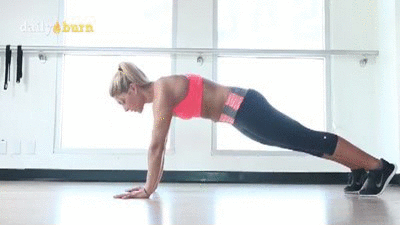
- Do as many push ups as you can without taking a break. Don’t stop because you’re tired—stop because you cannot physically do another push up.
- Take the total number of push ups you were able to do and cut that down to half. For example, if you did 30 push ups total that would result in the number 15.
- Next time you do your push ups, do three sets of that number (15 in our example) with 60-90 seconds breaks in between. If you can manage to do more on the last set, you should.
Dips :
Dips are a great upper body-strengthening exercise you can do with the aid of a chair or a bench. While they’ll strengthen many of the same muscles as push ups, they’ll do a bit more to work the rhomboid muscles in your back. The 150 Dips program explains the proper form:
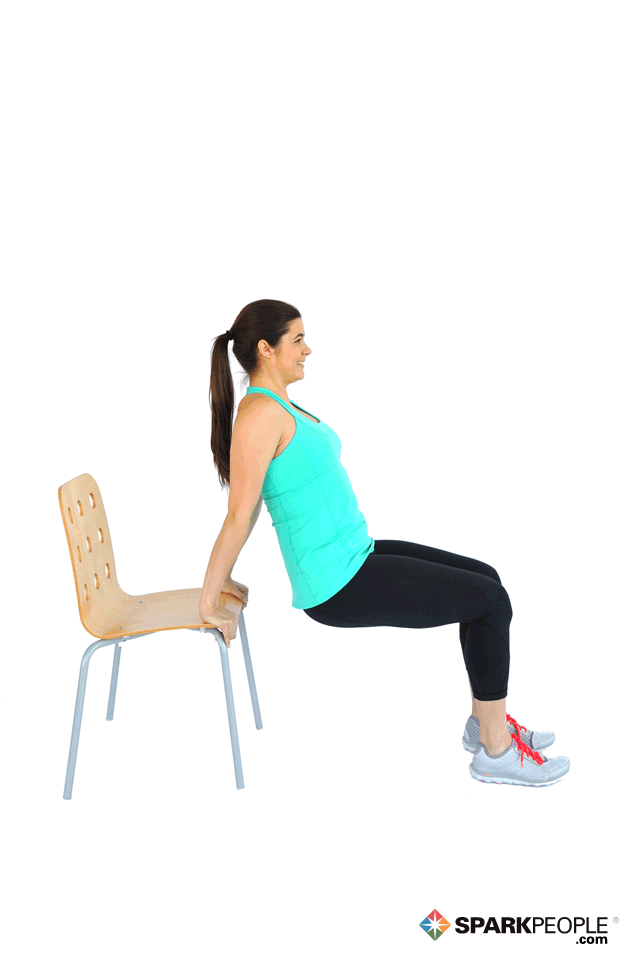
Stand with your back to a chair or bench. Be sure that the object is sturdy and can comfortably support your body weight. Bend your legs and place your palms on the front edge of the bench, with your fingers pointing forward. Slowly walk your feet out in front of you, until the majority of your body weight is resting on your arms. Inhale, and keeping your elbows tucked in at your sides, slowly bend your arms and lower your body until your upper arms are parallel with the floor (see pic below). You should also notice your hips have dropped straight down toward the floor. Hold for a second, then exhale and straighten your arms back up to the starting position.
The Roll Up :
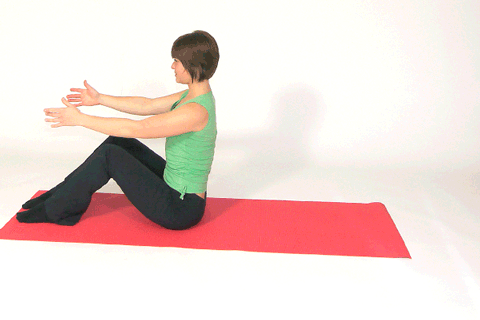
The roll up is very similar to a normal sit up with a few key differences. First, you start with you arms all the way back behind you and you bring them all the way forward into a sitting position. Breathing is key during the process as you inhale as you begin to move upward and exhale as you complete. You also perform this motion slowly, as rushing through the process will do far less to work your core. Learning to do the roll up properly can take a little practice, and you may not be able to do it fully at first if you’re just getting started. Watch the video to the left for a demonstration of the easy and the hard way to do this exercise.
The (Half) Roll Down :
The roll down will feel a lot like a reverse sit up, and therefore may seem redundant, but it’s an important exercise to pair with the roll up. Start sitting up with your feet flat on the floor creating a 45 degree angle. Just to get in the right position, place your hands under your thighs and hold yourself sitting up. You can leave your hands there as you do this exercise, however for a greater challenge you want to place your hands extended out in front of you. From this starting position, inhale, then exhale as you lean back slowly towards the ground. You’ll be extending down until your shoulder blades are just lightly touching the surface below you. It’s important that you do not go down so far that you’re being supported by the ground but just far enough that you know you’ve completed the first full range of motion. Now inhale, then exhale as you move back up into the starting position. Once you’re there, your back will be slightly curved. Lift your head up and adjust your back into a straight spine position. Feel free to do multiple sets of this exercise, but never more than 15 repetitions per set.
The Hundred :
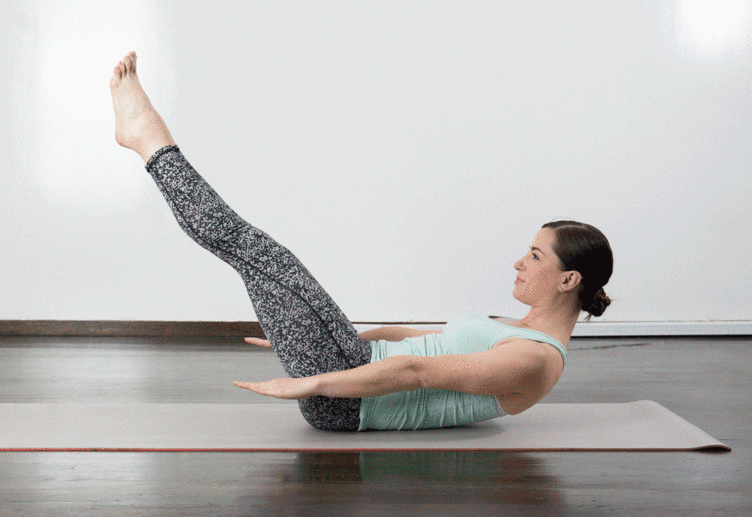
The hundred is complicated, tiring, and best explained visually (so watch the video to your left). To perform this exercise, you lay flat on your back and lift up your knees until they create an approximately 45 degree angle with your feet still touching the ground. Start by keeping your arms down with your palms flat against the ground. Don’t press your back flat on the floor or arch it up—try to keep it as centered as possible. Once you’re in the correct position, lower your chin slightly and begin to lift yourself upwards by pulling your abdomen in. As you do, lift your hands off the ground and keep your arms extended straight. Some versions of the hundred suggest that you lift your feet off the ground so the bend in your legs create a 90 degree angle. If this is too hard for you, other versions suggest you can perform this exercise without lifting your feet. All that work you just did was to get you in the proper position. Now you get to do the hard part.
The Basic Plank :
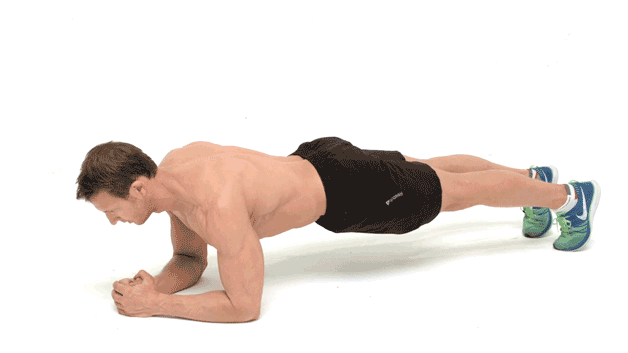
The basic plank is a simple but challenging exercise that targets the whole of your core. It might take a little practice to get right at first, but once you get it down you just have to hold yourself in the proper position. WebMD explains how it’s done:
Lie on your stomach, elbows close to your sides and directly under your shoulders, palms down. Engage the abs and slowly lift your torso off the floor, maintaining a stiff torso and legs. Avoid sagging at the low back or hiking up your hips. Continue to breathe while holding this position for 15 seconds or more.
Squat :
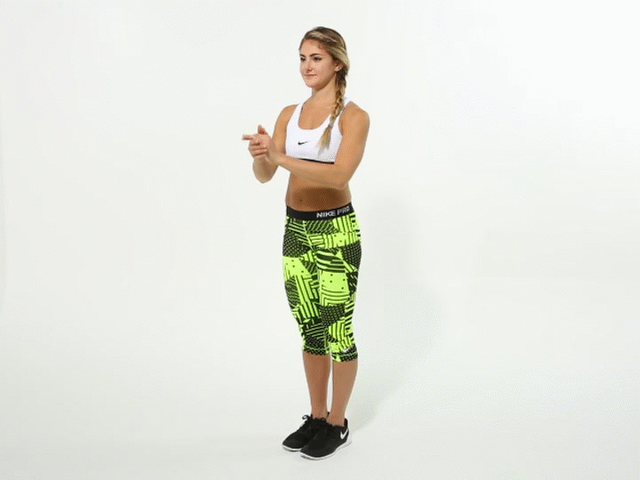

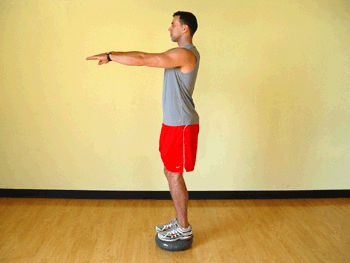
Squats are a great, simple exercise to strengthen all sorts of good stuff including your legs, lower back, hips, buttocks, and even bones. So long as they’re performed correctly, they’re an excellent way to target the majority of the muscles in your lower body. So how do you squat correctly? The folks who created the 200 Squats program can explain:
Stand up straight with your feet firmly planted on the ground approximately shoulder width apart. To help maintain a straight back as you perform the exercise, it’s a good idea to focus on an object directly ahead of you at eye level.2. Contract your abdominal muscles as you bend your legs at the knees. Either stretch your arms out ahead of you, lightly position your hands behind your ears or hold your arms at your side as you slowly lower yourself into a squatting position. Lower your body to a position where your thighs are almost parallel to the floor. Return to the starting position and repeat.
